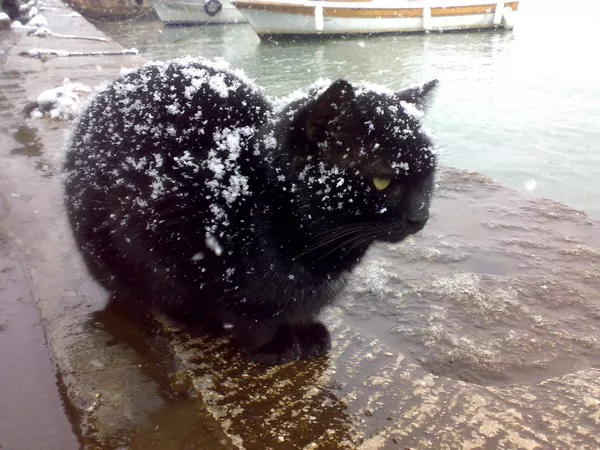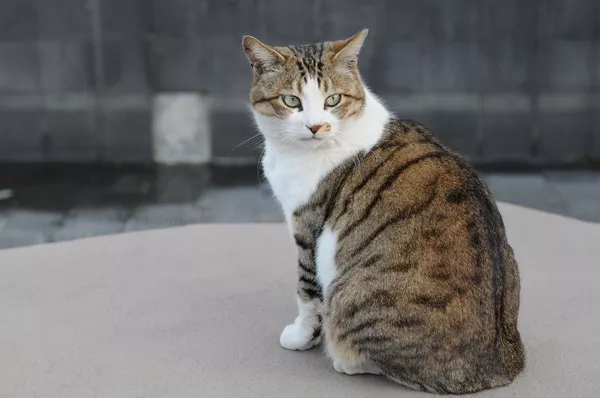Forest cats are a group of cat breeds that are known for their thick, long fur and their ability to adapt to cold climates. These cats are typically larger than other breeds, with muscular bodies and strong legs that allow them to navigate rough terrain. As a veterinarian, I often get questions from cat owners about forest cats and their unique characteristics.
Types of Forest Cats
There are several different types of forest cats, including the Norwegian Forest Cat, the Siberian Cat, and the Maine Coon. These cats are all known for their thick, long fur and their ability to adapt to cold climates. They may also share other characteristics, such as a playful and curious personality, a strong hunting instinct, and a love of the outdoors.
Norwegian Forest Cats are a breed that originated in Norway and were traditionally used as hunting cats. They have a thick, waterproof coat that helps them stay warm and dry in cold weather, as well as strong legs that allow them to climb trees and navigate rough terrain.
Siberian Cats are a breed that originated in Russia and were also used as hunting cats. They have a thick, triple-layered coat that helps them stay warm in cold weather, as well as a strong and muscular body that gives them excellent jumping and climbing ability.
Maine Coon Cats are a breed that originated in the United States and were also used as hunting cats. They have a thick, shaggy coat that helps them stay warm in cold weather, as well as a long and muscular body that gives them excellent agility and strength.
Recognizing and Caring for Your Forest Cat
Forest cats require special care due to their thick, long fur and their tendency to shed more than other breeds. They may also require more exercise and playtime to keep them mentally and physically stimulated. To care for your forest cat, it is important to provide regular grooming to prevent matting and keep their coat healthy. They also require a healthy diet and plenty of exercise to keep them in good physical shape.
Potential owners should be aware of any health concerns that may be associated with their cat’s breed, such as hip dysplasia in Norwegian Forest Cats or heart disease in Maine Coon Cats. They should work with their veterinarian to provide regular check-ups and preventative care to keep their forest cat healthy and happy.
Regular grooming: Forest cats require regular grooming to prevent matting and keep their coat healthy. This includes brushing their coat at least once or twice a week, using a comb or brush designed for long-haired cats. During shedding season, they may require more frequent brushing to remove loose fur. It is also important to trim their fur around the hindquarters to prevent fecal matting.
Healthy diet and exercise: A healthy diet and plenty of exercise are important for maintaining a forest cat’s health. A balanced diet that is high in protein and low in carbohydrates can help keep their coat shiny and healthy. Regular exercise and playtime can also help improve their overall health and reduce stress, which can have a positive impact on their coat and skin.
Health concerns: Forest cats may be prone to certain health concerns due to their genetics or breed characteristics. For example, Norwegian Forest Cats may be at risk for hip dysplasia, while Maine Coon Cats may be at risk for heart disease. Potential owners should be aware of these health concerns and work with their veterinarian to provide regular check-ups and preventative care.
Mental stimulation: Forest cats are intelligent and active cats that require mental stimulation to prevent boredom and destructive behavior. Providing them with interactive toys, scratching posts, and playtime can help keep them mentally stimulated and happy.
Regular veterinary check-ups: Regular veterinary check-ups are important for maintaining a forest cat’s health. This includes annual exams, vaccinations, and preventative care such as flea and tick prevention. Early detection and treatment of any health issues can help prevent more serious problems down the road.
Health Concerns for Forest Cats
While forest cats are generally healthy cats, they may be prone to certain health issues due to their genetics or breed characteristics. For example, some Maine Coon cats may develop hip dysplasia, a condition that affects the hip joint and can cause pain or difficulty walking.
Norwegian Forest Cats may also be at risk for hypertrophic cardiomyopathy, a type of heart disease that can affect cats of all breeds. Siberian Cats may be prone to developing allergies, which can cause skin irritation and other symptoms. Potential owners should be aware of these health concerns and should work with their veterinarian to provide regular check-ups and preventative care to keep their forest cat healthy.
Hip dysplasia: Some Maine Coon cats may develop hip dysplasia, a condition that affects the hip joint and can cause pain or difficulty walking. This condition is caused by a malformation of the hip joint, which can lead to arthritis and other joint problems. Potential owners should work with their veterinarian to monitor their cat’s hip health and provide preventative care to prevent or manage this condition.
Hypertrophic cardiomyopathy: Norwegian Forest Cats may be at risk for hypertrophic cardiomyopathy, a type of heart disease that can affect cats of all breeds. This condition is characterized by thickening of the heart muscle, which can lead to heart failure or sudden death. Potential owners should work with their veterinarian to monitor their cat’s heart health and provide preventative care to prevent or manage this condition.
Allergies: Siberian Cats may be prone to developing allergies, which can cause skin irritation and other symptoms. Allergies can be caused by a variety of factors, including environmental allergens, food allergies, and flea allergies. Potential owners should work with their veterinarian to identify and manage their cat’s allergies to prevent or manage symptoms.
Other health concerns: Forest cats may also be prone to other health concerns, such as dental problems, obesity, and urinary tract issues. Potential owners should work with their veterinarian to provide regular check-ups and preventative care to keep their forest cat healthy and happy.
Grooming Requirements for Forest Cats
Forest cats have a long, thick coat that requires regular grooming to prevent matting and keep it healthy. They may also shed more than other breeds, particularly during the spring and fall. To care for their coat, owners should brush their forest cat regularly, using a comb or brush designed for long-haired cats.
They may also need to trim their cat’s fur around the hindquarters to prevent fecal matting. In addition to grooming, owners should also provide their forest cat with a healthy diet and plenty of exercise to keep their coat and skin healthy.
Brushing: Forest cats should be brushed regularly, at least once or twice a week, to prevent matting and tangles in their fur. A comb or brush designed for long-haired cats is recommended. During shedding season, which typically occurs in the spring and fall, they may require more frequent brushing to remove loose fur.
Trimming: Forest cats may need to have the fur around their hindquarters trimmed to prevent fecal matting. This can be done using scissors or clippers, but should be done with caution to avoid injuring the cat.
Bathing: Forest cats generally do not require frequent baths, as their coat is naturally water-resistant and self-cleaning. However, if they get into something particularly dirty or smelly, a bath may be necessary. When bathing a forest cat, it is important to use a mild cat shampoo and to rinse thoroughly to avoid leaving any soap residue on their skin.
Nail trimming: Forest cats should have their nails trimmed regularly to prevent them from becoming too long and causing discomfort or injury. This can be done using a cat nail trimmer or clippers, or by a professional groomer or veterinarian.
Diet and exercise: A healthy diet and plenty of exercise are important for maintaining a forest cat’s coat and skin health. A balanced diet that is high in protein and low in carbohydrates can help keep their coat shiny and healthy. Regular exercise and playtime can also help improve their overall health and reduce stress, which can have a positive impact on their coat and skin.
Conclusion
Forest cats are a group of cat breeds that are known for their thick, long fur and their ability to adapt to cold climates. Whether you are considering a Norwegian Forest Cat, a Siberian Cat, or a Maine Coon Cat, it is important to recognize the unique characteristics of these breeds and provide them with the care and attention they need to thrive. By learning about the different types of forest cats and their care requirements, potential owners can make an informed decision about bringing one of these cats into their home and can provide them with the love and attention they need to live a happy and healthy life.
Related Topics



























